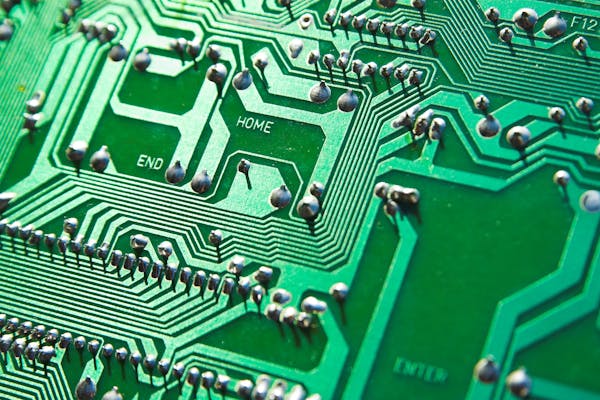
Nanotechnology, the science of manipulating matter on an atomic or molecular scale, continues to revolutionize various fields, from medicine to electronics, and even environmental sustainability. The latest innovations in nanotechnology are pushing the boundaries of what is possible, leading to groundbreaking applications and solutions to some of the world’s most pressing challenges. This article delves into these cutting-edge advancements, exploring their potential and the impact they are likely to have on our future.
Here are the Latest Innovations in Nanotechnology
1. Nanomedicine: Transforming Healthcare
One of the most promising areas where the latest innovations in nanotechnology are making a significant impact is in the field of medicine, known as nanomedicine. This area focuses on the use of nanoscale materials and techniques to diagnose, treat, and prevent diseases more effectively than ever before.
a. Targeted Drug Delivery
Targeted drug delivery systems are designed to deliver medication directly to diseased cells, minimizing damage to healthy cells and reducing side effects. Recent developments have led to the creation of nanoparticles that can carry drugs and release them at specific sites in the body. For example, researchers have developed nanoparticles that can bypass the blood-brain barrier, offering new hope for the treatment of neurological disorders such as Alzheimer’s disease and brain tumors.
b. Nano-Enabled Diagnostic Tools
Early diagnosis is crucial for effective treatment of many diseases. The latest innovations in nanotechnology have led to the development of highly sensitive diagnostic tools that can detect diseases at their earliest stages. Quantum dots, for instance, are fluorescent nanoparticles that can be used to tag and identify specific biomolecules, making it easier to detect cancer and other diseases with high precision.
c. Regenerative Medicine
Nanotechnology is also playing a pivotal role in regenerative medicine, which aims to repair or replace damaged tissues and organs. Nanomaterials such as nanofibers and nanoparticles are being used to create scaffolds that support cell growth and tissue regeneration. These advancements are paving the way for the development of artificial organs and improved methods for healing injuries and wounds.
2. Nanoelectronics: Shaping the Future of Technology
The electronics industry has long been driven by the pursuit of smaller, faster, and more efficient devices. The latest innovations in nanotechnology are enabling unprecedented advancements in this field, leading to the development of next-generation electronic components and devices.
a. Graphene and 2D Materials
Graphene, a single layer of carbon atoms arranged in a hexagonal lattice, has garnered significant attention due to its remarkable electrical, thermal, and mechanical properties. Recent research has expanded to other two-dimensional (2D) materials, such as transition metal dichalcogenides (TMDs), which hold promise for a variety of electronic applications. These materials are being used to create faster transistors, more efficient batteries, and flexible, transparent electronic devices.
b. Quantum Computing
Quantum computing represents a paradigm shift in computing technology, with the potential to solve complex problems that are currently beyond the reach of classical computers. Nanotechnology is critical to the development of quantum computers, particularly in the fabrication of qubits—the fundamental units of quantum information. Innovations in nanofabrication techniques are enabling the creation of more stable and coherent qubits, bringing us closer to realizing the full potential of quantum computing.
c. Nanoscale Transistors
Transistors are the building blocks of modern electronic devices. The continuous drive to miniaturize these components has led to the development of nanoscale transistors. Recent advancements have resulted in the creation of transistors that are only a few nanometers in size, allowing for more powerful and energy-efficient processors. These innovations are essential for the continued progress of Moore’s Law, which predicts the doubling of transistors on a microchip approximately every two years.
3. Nanotechnology in Energy: Powering a Sustainable Future
The quest for sustainable and renewable energy sources is one of the most critical challenges of our time. The latest innovations in nanotechnology are playing a crucial role in the development of new energy solutions that are more efficient, cost-effective, and environmentally friendly.
a. Solar Cells
Nanotechnology is revolutionizing the design and efficiency of solar cells. Traditional silicon-based solar cells are being enhanced with nanomaterials such as perovskite, quantum dots, and carbon nanotubes. These materials can improve light absorption, reduce energy losses, and increase the overall efficiency of solar panels. Additionally, flexible and lightweight nanomaterial-based solar cells are opening up new possibilities for portable and wearable solar-powered devices.
b. Energy Storage
Effective energy storage is essential for the widespread adoption of renewable energy sources. Nanotechnology is contributing to the development of advanced batteries and supercapacitors with higher energy densities, faster charging times, and longer lifespans. For example, researchers are exploring the use of nanostructured materials such as silicon nanowires and graphene for next-generation lithium-ion batteries, which could significantly improve their performance and durability.
c. Hydrogen Production and Storage
Hydrogen is considered a clean and sustainable energy carrier, but its production and storage pose significant challenges. Nanotechnology offers innovative solutions to these challenges. Nanocatalysts can enhance the efficiency of water splitting processes to produce hydrogen, while nanomaterials such as metal-organic frameworks (MOFs) can improve hydrogen storage capabilities. These advancements are paving the way for a hydrogen-based economy, with applications ranging from fuel cells to industrial processes.
4. Environmental Applications: Addressing Global Challenges
Nanotechnology is also being harnessed to address various environmental challenges, from pollution remediation to water purification. The latest innovations in nanotechnology are providing new tools and methods to protect and restore the environment.
a. Water Purification
Access to clean water is a fundamental human right, yet millions of people around the world lack it. Nanotechnology is enabling the development of advanced water purification systems that can remove contaminants more effectively and efficiently. Nanofilters made from materials such as graphene oxide and carbon nanotubes can filter out bacteria, viruses, and heavy metals from water, providing safe drinking water even in remote and underserved areas.
b. Air Pollution Control
Air pollution is a major public health concern, and nanotechnology is offering new ways to combat it. Nanomaterials are being used to create more efficient air filters and catalytic converters that can capture and neutralize harmful pollutants. For instance, titanium dioxide nanoparticles can be used to break down pollutants in the air through a process called photocatalysis, helping to reduce smog and improve air quality in urban areas.
c. Soil Remediation
Contaminated soil can pose serious risks to human health and the environment. Nanotechnology-based approaches are being developed to remediate polluted soil more effectively. Nanoparticles can be used to immobilize or degrade toxic substances, such as heavy metals and organic pollutants, in the soil. These techniques offer a more targeted and sustainable alternative to traditional soil remediation methods, which often involve extensive excavation and disposal.
5. Nanotechnology in Agriculture: Enhancing Food Security
Agriculture is another sector where the latest innovations in nanotechnology are making a significant impact. From improving crop yields to reducing the environmental impact of farming, nanotechnology is helping to ensure food security for a growing global population.
a. Nano-Fertilizers and Pesticides
Traditional fertilizers and pesticides can have adverse effects on the environment and human health. Nanotechnology is enabling the development of nano-fertilizers and pesticides that are more efficient and environmentally friendly. These products can be designed to release nutrients or active ingredients in a controlled manner, reducing the amount needed and minimizing runoff into water bodies. This precision in delivery not only enhances crop productivity but also reduces the ecological footprint of agriculture.
b. Soil Health Monitoring
Maintaining healthy soil is crucial for sustainable agriculture. Nanotechnology is providing new tools for monitoring soil health more accurately and comprehensively. Nanosensors can detect soil parameters such as nutrient levels, moisture content, and pH in real time. This information allows farmers to make data-driven decisions to optimize soil management practices, ensuring better crop growth and higher yields.
c. Plant Disease Detection
Early detection of plant diseases is essential for preventing crop losses and ensuring food security. Nanotechnology-based diagnostic tools are being developed to detect plant pathogens with high sensitivity and specificity. For example, nanosensors can identify the presence of disease-causing microbes or stress indicators in plants, enabling timely intervention and reducing the need for broad-spectrum pesticides.
6. Nanotechnology in Consumer Products: Enhancing Everyday Life
The integration of nanotechnology into consumer products is becoming increasingly common, leading to enhanced performance, durability, and functionality of everyday items.
a. Textiles and Clothing
Nanotechnology is transforming the textile industry by enabling the creation of fabrics with unique properties. Nanocoatings can make textiles water-repellent, stain-resistant, and antimicrobial. Additionally, nanofibers can be used to create lightweight, breathable, and strong fabrics, enhancing the comfort and durability of clothing. Smart textiles, embedded with nanosensors and electronic components, can monitor vital signs or change color in response to environmental stimuli, offering new possibilities for wearable technology.
b. Cosmetics and Personal Care
Nanotechnology is revolutionizing the cosmetics and personal care industry by enabling the development of products with improved efficacy and safety. Nano-sized ingredients can enhance the delivery of active compounds in skincare products, leading to better absorption and effectiveness. For example, nanoemulsions and liposomes are being used to deliver vitamins, antioxidants, and anti-aging compounds deeper into the skin. Additionally, nanoparticles can provide long-lasting sun protection by forming a protective layer on the skin that reflects and absorbs UV radiation.
c. Food Packaging
Nanotechnology is enhancing food packaging by improving its barrier properties and functionality. Nanocomposites, made by incorporating nanomaterials into packaging materials, can provide better protection against moisture, oxygen, and microbial contamination. These advanced packaging solutions can extend the shelf life of food products and reduce food waste. Moreover, nanosensors embedded in packaging can monitor the freshness and quality of food, providing real-time information to consumers and ensuring food safety.
7. Ethical and Regulatory Considerations
While the latest innovations in nanotechnology hold immense promise, they also raise important ethical and regulatory considerations. As nanotechnology continues to advance and integrate into various aspects of our lives, it is crucial to address these challenges to ensure the responsible development and application of this technology.
a. Safety and Environmental Impact
The potential risks associated with nanomaterials, including their impact on human health and the environment, need to be thoroughly evaluated. Research is ongoing to understand nanoparticle toxicity, bioaccumulation, and long-term effects. Regulatory frameworks are being developed to ensure the safe use of nanotechnology in consumer products, medical applications, and industrial processes. It is essential to balance innovation with precaution to minimize any adverse effects.
b. Privacy and Security
The use of nanotechnology in electronic devices and sensors raises concerns about privacy and security. For instance, nanoscale sensors embedded in smart textiles or wearable devices can collect sensitive personal data. Ensuring robust data protection measures and addressing potential misuse of such technology are critical to maintaining user trust and privacy.
c. Ethical Implications
The rapid advancements in nanotechnology also pose ethical questions regarding its impact on society. Issues such as access to nanotechnology-based healthcare, potential job displacement due to automation, and the implications of human enhancement technologies need to be carefully considered. Engaging in public dialogue and involving stakeholders in the decision-making process can help address these ethical concerns and promote equitable and responsible use of nanotechnology.
Conclusion
The latest innovations in nanotechnology are driving transformative changes across various fields, from medicine and electronics to energy and agriculture. These advancements can potentially address some of the most pressing challenges facing humanity, including disease, environmental degradation, and food security. As we continue to explore and harness the capabilities of nanotechnology, it is essential to navigate the associated ethical and regulatory considerations to ensure its responsible and sustainable development. The future of nanotechnology is undoubtedly promising, and its continued evolution will likely lead to even more groundbreaking discoveries and applications, shaping the world in ways we can only begin to imagine.

